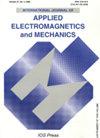人工智能和机器学习在电磁设备设计过程中的应用
IF 0.7
4区 工程技术
Q4 ENGINEERING, ELECTRICAL & ELECTRONIC
International Journal of Applied Electromagnetics and Mechanics
Pub Date : 2023-12-14
DOI:10.3233/jae-230104
引用次数: 0
摘要
与许多其他设备一样,电磁设备的设计也是一个反问题。问题在于,输入的性能和一些约束条件已经提供,但设计问题的解决方案却不是唯一的。此外,按照惯例,在设计流程的开始阶段,需要快速生成有关潜在解决方案的信息,以便设计人员在进行详细的性能分析之前做出有效决策,但从简单的分析工具中获得的信息量有限。机器学习可以在设计流程的早期阶段增加可用信息量,从而提供帮助。这并不是一个新概念,事实上,几十年来人们一直在考虑这个问题,但始终受到可用计算能力的限制。机器学习领域的最新进展可能会使设计过程的 "尺寸确定 "阶段更加有效,从而降低最终设计的生成成本。本文的目的是回顾将人工智能应用于电磁设备设计和分析的一些工作,并通过考虑机器学习在传统设计中使用的几种工具中的一些实例,讨论过去三十年来所考虑的可能情况。本文章由计算机程序翻译,如有差异,请以英文原文为准。
The application of artificial intelligence and machine learning in the design process for electromagnetic devices
Designing an electromagnetic device, as with many other devices, is an inverse problem. The issue is that the performance and some constraints on the inputs are provided but the solution to the design problem is non-unique. Additionally, conventionally, at the start of the design process, the information on potential solutions needs to be generated quickly so that a designer can make effective decisions before moving on to detailed performance analysis, but the amount of information that can be obtained from simple analysis tools is limited. Machine learning may be able to assist by increasing the amount of information available at the early stages of the design process. This is not a new concept, in fact it has been considered for several decades but has always been limited by the computational power available. Recent advances in machine learning might allow for the creation of a more effective “sizing” stage of the design process, thus reducing the cost of generating a final design. The goal of this paper is to review some of the work in applying artificial intelligence to the design and analysis of electromagnetic devices and to discuss what might be possible by considering some examples of the use of machine learning in several tools used in conventional design, which have been considered over the past three decades.
求助全文
通过发布文献求助,成功后即可免费获取论文全文。
去求助
来源期刊
CiteScore
1.70
自引率
0.00%
发文量
100
审稿时长
4.6 months
期刊介绍:
The aim of the International Journal of Applied Electromagnetics and Mechanics is to contribute to intersciences coupling applied electromagnetics, mechanics and materials. The journal also intends to stimulate the further development of current technology in industry. The main subjects covered by the journal are:
Physics and mechanics of electromagnetic materials and devices
Computational electromagnetics in materials and devices
Applications of electromagnetic fields and materials
The three interrelated key subjects – electromagnetics, mechanics and materials - include the following aspects: electromagnetic NDE, electromagnetic machines and devices, electromagnetic materials and structures, electromagnetic fluids, magnetoelastic effects and magnetosolid mechanics, magnetic levitations, electromagnetic propulsion, bioelectromagnetics, and inverse problems in electromagnetics.
The editorial policy is to combine information and experience from both the latest high technology fields and as well as the well-established technologies within applied electromagnetics.

 求助内容:
求助内容: 应助结果提醒方式:
应助结果提醒方式:


